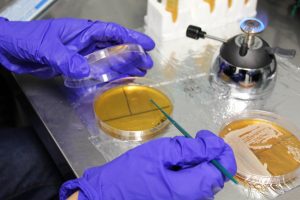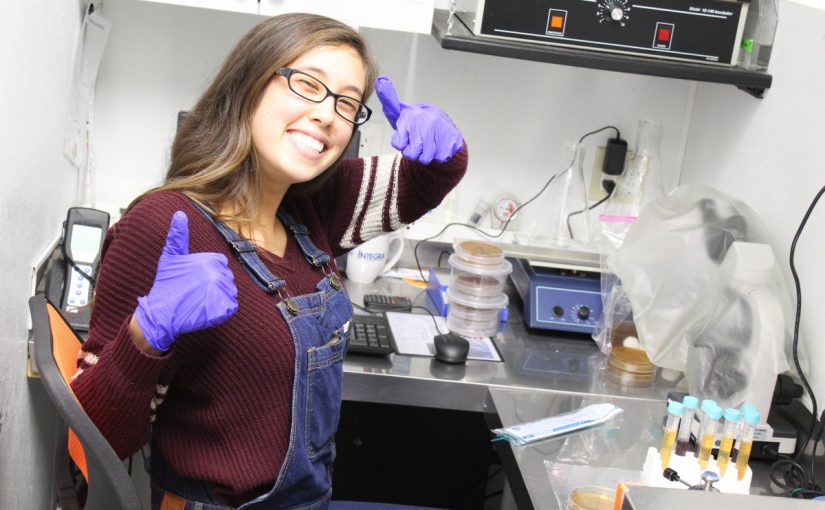I’m halfway there and I’m on my way and I’ve got to say, I’m feeling ok!! 🙂
The highlight of this week (by far) was talking to Doug about his yeast project. At the Burien brewpub, Tom brews a beer called North Atlantic Haze. The yeast used in North Atlantic Haze is seasonal. The only time you can buy it in small(ish) batches is October-November. (In theory, EBBC has access to the yeast during other months of the year, but it costs a lot more and has to be bought in bulk.) Essentially, if they want to buy the particular strain of yeast when it is not in season, they have to blow their entire yeast budget for the year on a single beer!
In order to make the beer accessible year round (and save a thousand bucks), Doug is working on propagating the yeast in a lab. He not a microbiologist, and has learned everything from YouTube videos or from a yeast book published by the Brewers Association, but the project looks to be successful so far. He showed me how he captures/stores/propagates yeast from a single cell, and I even got to try it out myself. The hope is that in a few weeks, they will begin to brew the first batch of North Atlantic Haze with the yeast Doug has farmed. I can’t wait to try it out.

Another highlight of the week was participating in the Beer Education 1 class at Elliott Bay Brewing in West Seattle. All new employees are required to take the hour long class which includes learning basic information about how beer is made and different types of beer, a brewery tour, and a tasting. Not only was it educational, but fun. I recently got a job as a server at a sports restaurant. They quizzed me on basic beer knowledge and I was stoked to realize that I knew all they were asking and more.
|Beer fun facts!| Beer is composed of 4 basic ingredients: water, barley (processed into malt), hops, and yeast. Water makes up the majority of the beer. Malt is what gives sweetness (and often, color) to beer. Hops is what gives off bitterness. Yeast eats the sugars, which come mostly from the malt, and the more sugar in the beer, the higher ABV (alcohol content). In most beers, the natural sugars from the malt are enough, but for some darker beers or pumpkin beers for example, cane sugar has to be added. This is why super light beers (like Bud Light) have fewer calories than an Oktoberfest beer for example! They have fewer calories because they require less sugar in the brew.
The rest of this week has been pretty typical. I went to the different brewpubs to take photos. I posted content daily. I met with Doug and Adam to discuss future plans and current progress. I also did quite a bit of research on how to take better food photos because I want to make sure that the content I’m putting out is my best work possible.
(The first few weeks I was so focused on cranking out content that I never stopped to consider the quality of content. Although I know that the photos I have been producing are better than what Elliott Bay was doing prior to my joining the team, I do not think that I am reaching my full photography potential. I want to learn to take better photos, and although a lot of the skill will come from practice, there is a lot I can learn from others online about how to take food photos and how to use the camera.)
In terms of content creation, a fun new resource I have found is the Preview app. Some of my favorite beer instagrams such as @allagashbrewing and @elysianbrewing have Instagram themes (which means that all of their photos use similar filters to look more cohesive). I’ve begun to do this with the Elliott Bay and Brother Barrel accounts, and the Preview app helps me to plan out my posts to make sure that they look good next to each other and all fit in with the theme!
My goals for next week are:
-post another employee spotlight
-create content to promote the BAI (Barrel Aged Invitational)
-do more research in regards to using my camera
